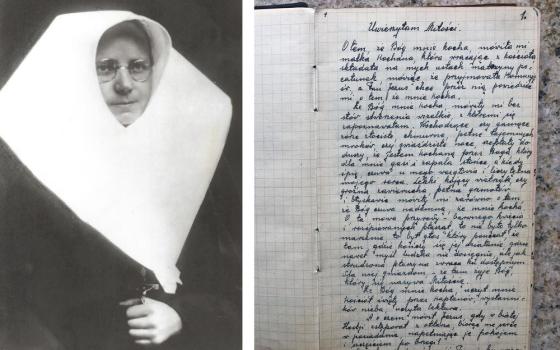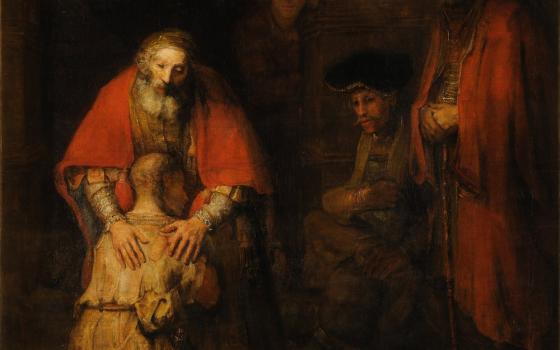Today marks the 90th anniversary of the Tomb of the Unknown Soldier. Having been killed during World War I in France, his unidentified body was interred at Arlington Cemetery outside of Washington, D.C., to stand as a symbolic memorial for the thousands of other soldiers who died without their identities being known. Since then, other soldiers' unidentified bodies from additional wars have been buried at the tomb.
Three weeks ago, I traveled to another burial ground: the Catacomb of Priscilla outside the ancient walls of Rome. In the early 200s, a wealthy woman named Priscilla allowed Christians, Pagans and Jews to bury their dead below the grounds of her large estate. Winding and deep chambers were cut into the volcanic rock below, where bodies were placed in stacked tombs, marked by stone carvings. The wealthy were given entire rooms for their burial chambers and frescoes were painted on the ceiling and walls. While most of the tombs held the remains of people unknown to us now, at the time of burial, these humans were known.
Not only were they known, but some were known in a particular way: as women priests and other women ministers in early Christian communities.
Dorothy Irvin, a biblical scholar and archaeologist, accompanied my tour group as we journeyed to this catacomb. We wound our way through narrow, dimly lit tunnels to a bright, small room revealing the remains of a woman's tomb.
The woman's burial chamber was brightly bedecked with hand-painted frescoes from approximately 1,800 years ago. On the far wall was a triptych depicting the woman's life. On the left was a painting of the woman's marriage; on the right, a depiction of the woman holding her child. In the center, greater in size than the flanking paintings, was the woman standing. Her hands were upheld in "orans," or the Christian leader's prayer stance, with a "dalmatic" clothing her. Dorothy later told me that the cloth draped around her signifies that she was a deacon.
I later interviewed Dorothy, who shared images from other archeological sites. Here, from Tropea in Italy, is a burial engraving that refers to Leta, who was a "presbitera," or woman priest:

In Ostia outside of Rome, one may see this sarcophagus that depicts an older woman teaching a younger woman. The older woman, signifying the woman buried there, holds a scroll symbolizing she is teaching from a sacred text. She was likely a respected religious teacher within her early Christian community.

When I asked Dorothy to describe the most important archeological site that depicts women's early leadership roles in the church, she responded that "the significance is not so much in one site over against another."
Instead, she said, "The really striking thing is that what we have archaeologically is pretty much universal coverage. We have ordained women from places such as Egypt and the southern deserts of Jordan through Jerusalem over to Turkey and the Czech Republic, and back through northern and southern Europe. In other words, the entire geographical area of the early church gives us written and pictorial documentation."
She noted that whatever forms of art are used in a particular region, "we find ordained women in those art forms." She went on to say, "If the art form is hand-woven textiles, then we will find ordained women in hand-woven textiles. If the art form is catacomb frescoes, we will find ordained women in those art forms."
Before we parted, Dorothy remarked: "I really admired Benedict XVI when he made it clear that the Holocaust had happened historically. Honesty and integrity demanded that we recognize that and not try to deny it or escape from that fact. I am hoping that will happen soon ... [for] women's history in the church."
Back at the Tomb of the Unknown Soldier, in the late 1990s, DNA testing revealed the identity of a soldier placed there after the Vietnam War. His body was removed, returned to his family and he was buried again -- this time in a marked grave. Everyone would now know his identity and role within the community: Air Force 1st Lt. Michael Blassie. He was buried with military honors.
For those still unidentified at Arlington Cemetery, the inscription reads: "Here Rests in Honored Glory an American Soldier Known but to God."
I look forward to the day when women's ordination and the other roles women held in our church's history are known, not only to God but to Christians today. I will celebrate when we are able to remember the women of our past, with honor.
To contact Dorothy Irvin for educational resources, email her at irvincalendar@hotmail.com.
[Nicole Sotelo is the author of Women Healing from Abuse: Meditations for Finding Peace, published by Paulist Press, and coordinates www.WomenHealing.com. A graduate of Harvard Divinity School, she currently works at Call To Action.]
| Editor's Note: We can send you an e-mail alert every time a Young Voices column is posted to NCRonline.org. Go to this page and follow directions: E-mail alert sign-up. If you already receive e-mail alerts from us, click on the "update my profile" button to add Young Voices to your list. |



